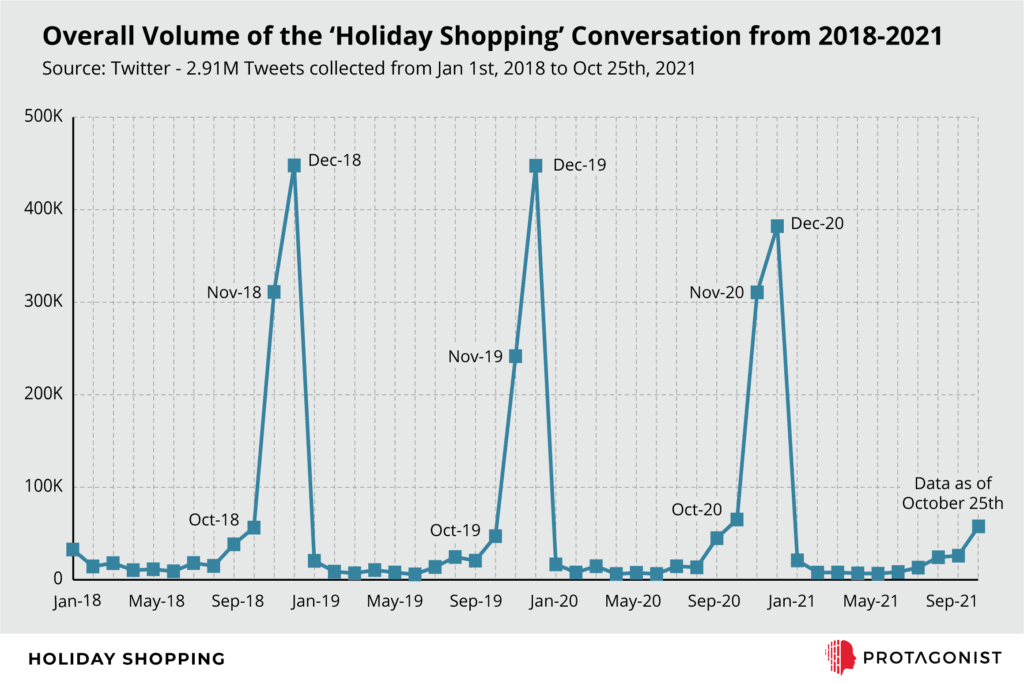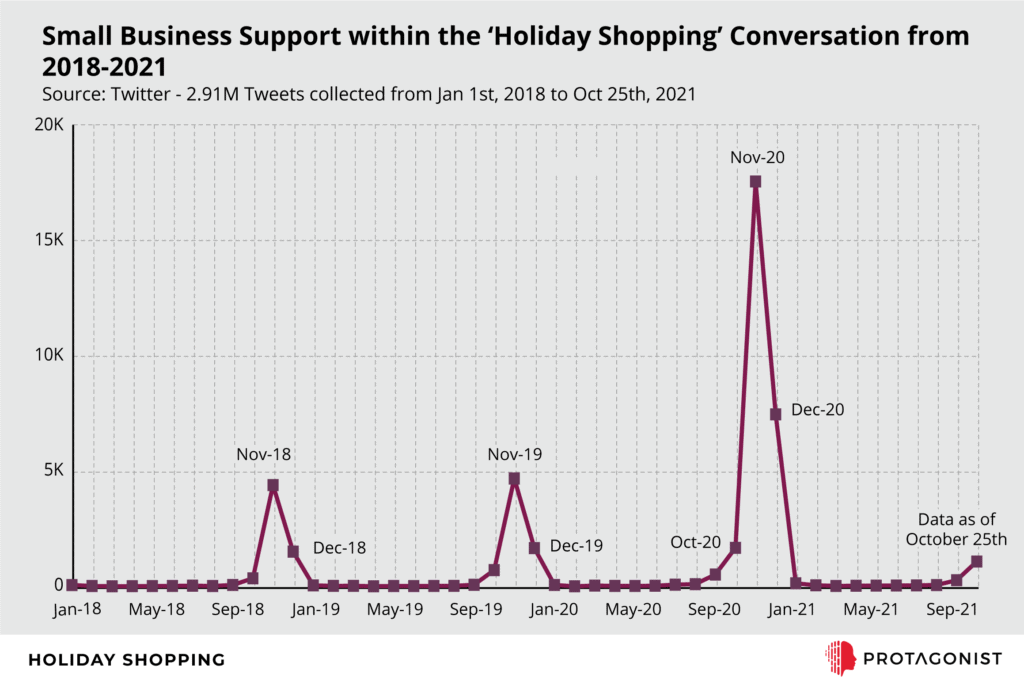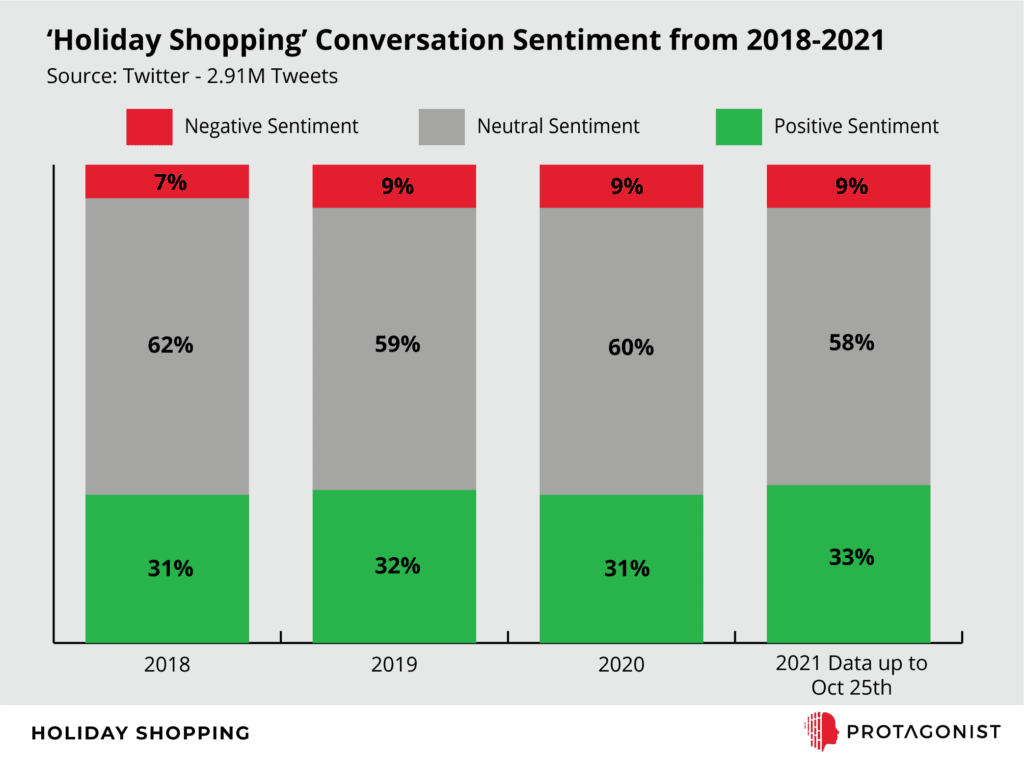Recently, the news media has highlighted how the upcoming holiday shopping season will be impacted by the pandemic’s disruption of global supply chains. Stories have focused on potential product scarcity and the need to start shopping early for gifts to be on time, with the implication that this may make consumers unhappy.
We wanted to see how these ideas were playing out in consumer narratives about the holiday shopping season. On the one hand, we could imagine consumers expressing the same concerns as the media, beginning to discuss holiday shopping earlier this year than in the past and dreading an unsuccessful gift-giving season. On the other hand, we can imagine a different narrative reaction, where consumers don’t feel compelled to engage more negatively about holiday shopping, perhaps because they have become accustomed to pandemic-caused disruptions to normal life, or because other holiday-related issues (such as spending time with family) diminish the importance of holiday shopping.
To explore consumer attitudes, we first looked at time. When do consumers normally start talking about holiday shopping, and is that timing changing this year?

The graph above lays out the holiday shopping conversation on Twitter from the beginning of 2018 to the present. As you might expect given the media’s focus, the volume of holiday shopping conversation thus far in October points to a significant increase over previous years–with about 20% of the month still to go, the discourse is already larger than previous October totals.
The overall volume of conversation is also interesting, with 2018 and 2019 showing very similar patterns, and 2020 showing an above-average November and a below-average December. We wanted to know what was driving these trends, so we took a closer look into what people were discussing in the holiday shopping conversation.

The key driver behind the November 2020 surge in conversation turned out to be the desire to support small businesses. In the midst of the first COVID holiday season, and with vaccines still not yet available, people turned toward the idea of helping local businesses in their communities stay afloat. While negative comments about big players like Amazon and Walmart abounded, the conversation around Small Business Saturday and ideas like “Shop Small” surged with positive sentiment.
The community support and positive sentiment shown in 2020 are notable, especially given how much everyone was feeling the effects of the pandemic. Will the conversation now turn negative as supply chain problems disrupt holiday shopping?

As the chart above shows, sentiment in the holiday shopping conversation has stayed remarkably consistent over time. During the past few years, the negative drivers have changed: in 2018, people expressed frustration with the chore of holiday shopping and gift selection; in 2019 the negative conversation shifted to the trade war with China increasing prices; and in 2020 people focused their anger on Amazon and Walmart domination (as local small businesses struggled to stay open).
We are very curious to see how the 2021 holiday shopping conversation will develop, and we’ll be including an update in our next newsletter. We are especially interested in whether we’ll see an interesting phenomenon that we often discover in Narrative Landscapes: media focusing on one narrative and individuals engaging with other narratives. Will consumer focus on disrupted holiday shopping persist, and will it turn the conversation uncharacteristically negative? Or will holiday cheer stay level with previous years, in spite of supply chain problems?

